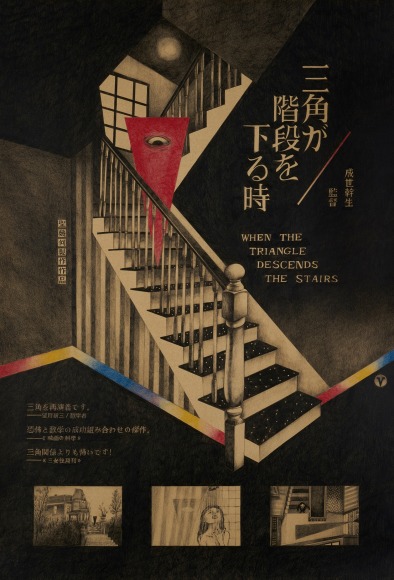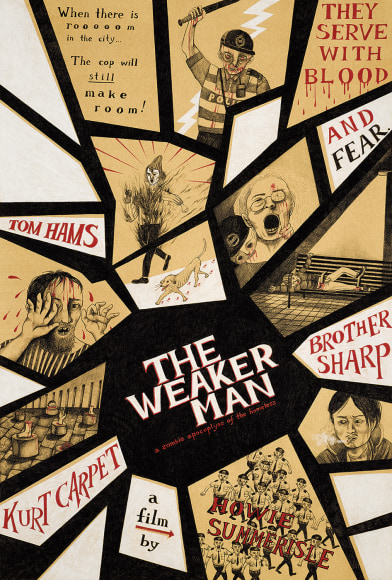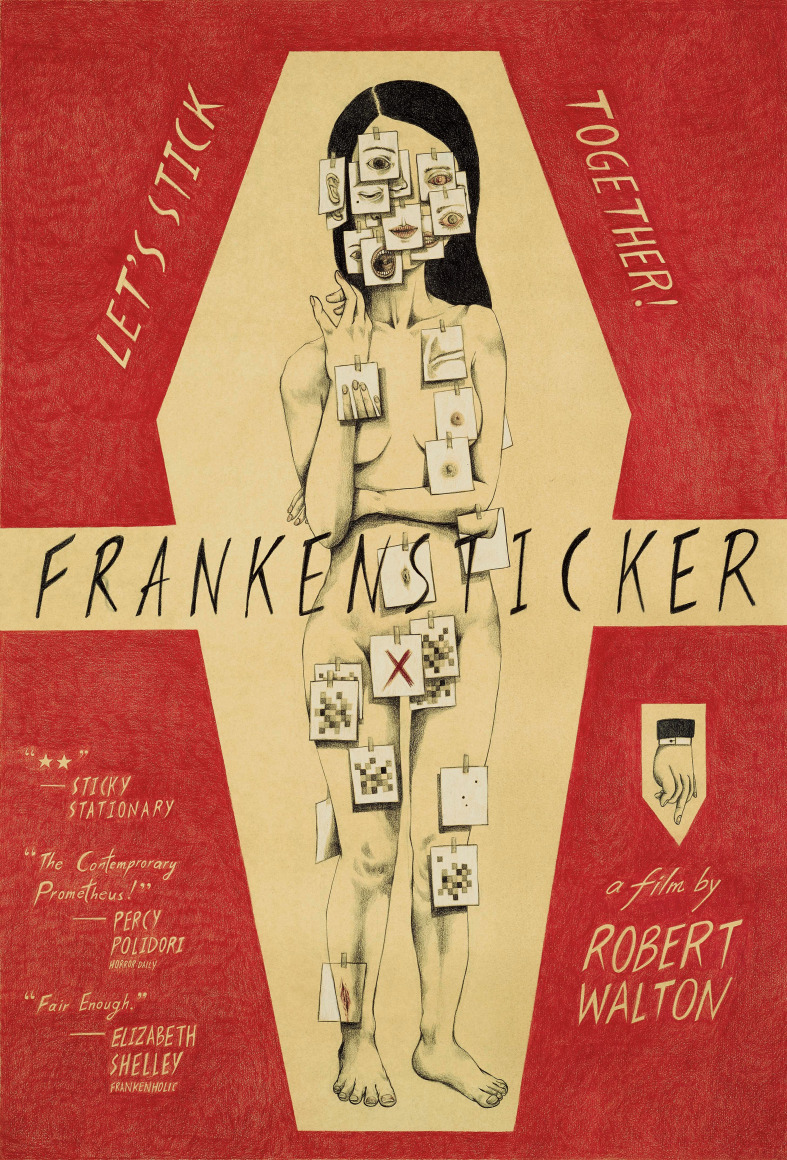Chambers Fine Art is pleased to announce the opening of Ho Sintung: Surfaced on February 2nd, 2017. Born in Hong Kong in 1986, Ho Sintung graduated from the Department of Fine Arts of the Chinese University of Hong Kong in 2008 and currently lives and works in Hong Kong. This will be her first exhibition in New York.
Preferring to work on a small scale and favoring pencil and graphite on paper above other media, she gives visual expression to her intentional misreading of all aspects of the cinema, not only films themselves but the buildings in which they are shown, posters and other ephemera. Drawing from her interest in films and literature, her work also reveals her familiarity with a wide range of twentieth century visual art to which she refers in her tongue-in-cheek hommages to the “movies.” The title she has chosen for this exhibition Surfaced is taken from a short story – a dark tale that is fittingly related to drawing – part of Strange Stories from a Chinese Studio by the Qing dynasty author Pu Songling.
In Surfaced the focus on horror movies is supplemented by designs for vintage LP covers and newspaper ads for imaginary movies. She recognizes that “the horror film has a significance in the history of film that should not be neglected – it tirelessly brings up the past, retelling stories that have been rejected over and over again. It makes sure that prayers that were unheard will be heard; justice that was absent will resurface once more. Horror films respond to reality in the same way that our bodies react to horror films. These drawings, although milder and more tactful in tone, disrupt the familiarity of the densely-knit fabric of day-to-day life, exposing its inner abnormality.” Sintung’s Heart(s) of Darkness(es) brings a touch of the real world to the exhibition, where she re-creates 17 existing editions of Joseph Conrad’s Heart of Darkness: “The heart is such an abstract idea, yet different designers across the world attempted to capture its essence with landscapes. By re-painting these covers, I create my own collection of haunted landscapes.”
Her fastidiously executed posters for imaginary horror films with their off-beat humor and eccentric typography captivate with their mordant wit. Who would not want to sneak into a darkened theater to see The Weaker Man: A Zombie Apocalypse of the Homeless, in which zombie police only attack the homeless or Frankensticker, a tantalizing variation on perhaps the most famous horror story of all time? Equally enticing is When the Triangle Descends the Stairs, a rare abstract incursion into the realm of the horrific. In a number of cases film stills give a foretaste of the horrors awaiting viewers of the movies as, for example, in Outlive the Light in which the temperature rises from 37 to 124 degrees in five days.
In the small gallery Ho Sintung pays homage to one of the twentieth century’s most notorious cinematic masterpieces, Pier Paolo Pasolini’s Salo, or the 120 Days of Sodom which was inspired by the magnum opus of the Marquis de Sade. Obsessed by the design of the carpet with a geometric design reflecting the aesthetics of the fascists that became the stage for torture scenes, Ho Sintung replicates it in Last Party as portraits of the actors and actresses establish a dialog with the viewer and Pasolini’s poem “Goodbye and best wishes” scrolls down the wall in lieu of film credits.
The particular charm of Ho Sintung’s posters for non-existent films and installations derives from her ability to compress a wide range of cinematic, art historical and literary references into carefully orchestrated compositions. Executed with the greatest finesse in colored pencil on tea-stained paper they exude what the artist refers to as “an antiquated quality.” Unique among cinéastes, she gives visual expression to her ‘mis-reading’ of all aspects of the cinema rather than formal and critical analysis.
另有一些剧照绘画为电影的恐怖气氛提供了预兆。例如作品《烈日当凶》中的五日天气预报中,气温逐渐从37摄氏度上升至124摄氏度。而在《巫中生有》的剧照中,我们看到一个患妄想症的女主角深受潜藏在身边的面孔的缠绕而不断呼救的场景。
在小展厅内,何倩彤向皮埃尔·保罗·帕索里尼的《索多玛120天》致敬,此电影改编自萨德侯爵同名小说,并添加了对现实和政治的批判,堪称二十世纪最臭名昭彰的电影杰作之一。艺术家对电影里的地毯万分着迷,不仅其几何图案反映了法西斯美学,它也成为了电影中酷刑所发生的场所,于是艺术家复制了此地毯,并邀请观众置身其中。电影里演员们的肖像被展示在小展厅墙上,仿佛在邀请观者与他们对话。
何倩彤的虚拟电影海报和装置的魅力,在于她能够广泛引用电影、艺术史及文学素材并压缩提炼成精心打造的构图。艺术家以其精湛的技艺用彩色铅笔在茶染纸本上绘画,营造出古旧的质感。与其他电影观众不同的是,她通过视觉形式来表现出对电影各个方面的回应,而并非局限在形式或是理论上的分析。
前波画廊诚挚地宣布《何倩彤:蒙尘风景》展览将于2016年9月17日开幕。何倩彤1986年在香港出生,2008年毕业于香港中文大学,目前工作和生活在香港。这也是其在前波画廊的首次展览。
在不到十年的艺术生涯中,何倩彤已脱颖而出,成为同辈中最具特色的艺术家之一。她倾向于制作小尺寸作品,相比其它媒材,她最热衷的是纸上铅笔和墨铅。她从视觉角度表达出自己对于电影各方面的“误读”——不仅对于电影本身,也包括电影院的建筑、海报等。尽管艺术家的创作常涉猎自文学和电影,但是她的作品却言不由衷地传达出其对各类二十世纪视觉艺术的广泛援引,例如那些向“电影”致敬的诙谐作品。
蒙尘风景》以恐怖电影为主题,因为艺术家认识到,“恐怖电影作为影史里不可忽视的一个类型,总是孜孜不倦地旧事重提,把被否定的历史再说一遍,让未被回应的祷告再度被听见,让缺席的公义再次被呈堂。恐怖电影对现世的反应是异常直接的,如它给予我们身体的反应一样。但这些绘画却采用一种委婉语调,把我们被严密组织的日常重新陌生化,令他们异常的本质得以显露。”
艺术家一丝不苟地为虚拟幻想的恐怖电影创作诙谐的海报,古灵精怪的文本彰显出她的机智和幽默。有谁不想躲到漆黑的电影院里观看《丧尸警察大战露宿者》,或是根据经典恐怖电影《科学怪人》改编的《科学怪贴》?同样引人入胜的是《三角步下楼梯时》,作品通过抽象的表现形式来诠释恐怖,而下方的小插图令人回想起阿尔弗雷德·希区柯克的著名电影《惊魂记》里的淋浴场景。



